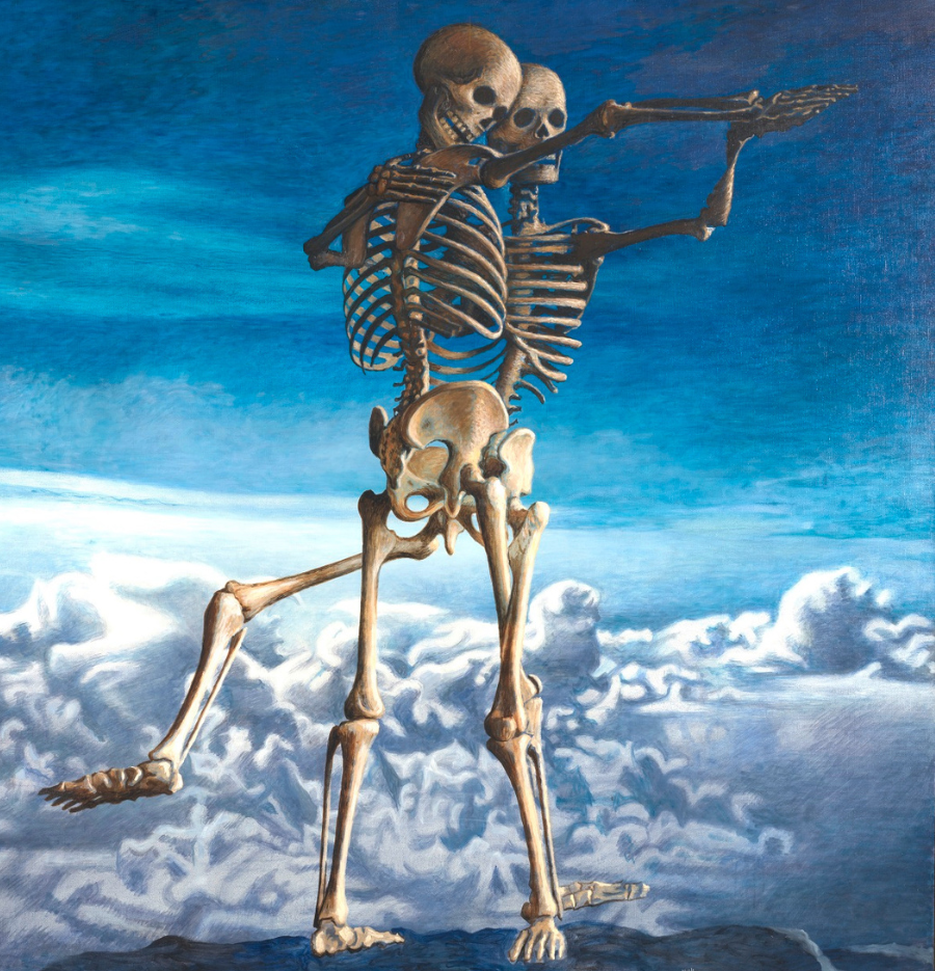 Danse macabre. Aat Veldhoen, 1982
Danse macabre. Aat Veldhoen, 1982
Tot Zover
Aat Veldhoen - Realist to the grave
Amsterdam artist Aat Veldhoen (1934–2018) is known for his colorful works, his freedom, and his zest for life. Death seemed far away, and he did not like to talk about it. Yet it plays an important role in his work. This exhibition shows another side of the colorful bon vivant and master of the art of living.
ticketsFor Aat, sex, birth, and death were inextricably linked. Without one, the other cannot exist. He often dealt with this loosely. For example, Aat painted, drew, and photographed dancing or copulating skeletons.
News junkie
War and images of human suffering regularly recur in his work, as does the symbol for radiation hazard. Aat was a news junkie and followed world news closely. He loved love and beauty and couldn't understand why there was so much violence. That made him an activist. As a young, committed artist, Aat rode along in ambulances and drew in morgues. Aat wasn't afraid of death itself, but he was afraid of the road leading to it.
Sensitive death portraits
Aat's sensitive side is reflected in the drawings he made of his deceased mother and friends. He worked with precision. They are tributes and, moreover, they allowed him to channel his grief. “Because someone who is gone becomes a still life,” according to Aat.
Aat had a strong bond with his mother, and it was natural for him to make her death portrait. He regretted not having done the same for his father, who died prematurely in 1955. Aat was 21 at the time and did not dare to do it.

Death portrait of Aat Veldhoen
For Aat Veldhoen (1934-2018), home and studio were one and the same. ‘You are always an artist, all day long.’ His colourful home was filled with his paintings, drawings, sculptures, easels and brushes. Veldhoen also liked to paint light switches. His daughter Venus is a photographer and took this portrait of her father shortly after his death. The coffin stood in the middle of the living room, surrounded by his artwork and painting supplies. The bouquets surrounding him are just as colorful.
About the exhibition
This exhibition shows a different side of the colorful bon vivant and master of the art of living, Aat Veldhoen. How did he relate to death? What was he trying to express with his work? And what is our opinion today about his explicit nudes?
In addition to artworks, the exhibition displays personal items belonging to Aat Veldhoen and includes an audio tour. The audio tour features interviews with his daughter Venus Veldhoen, his partner Hedy d'Ancona, and photographer Koos Breukel, among others. Visitors can also pose with a skeleton.
Some of the works in this exhibition come from the collection of the Cultural Heritage Agency of the Netherlands. The exhibition was made possible in part by contributions from Mondriaanfonds, het Cultuurfonds and Fonds 21.